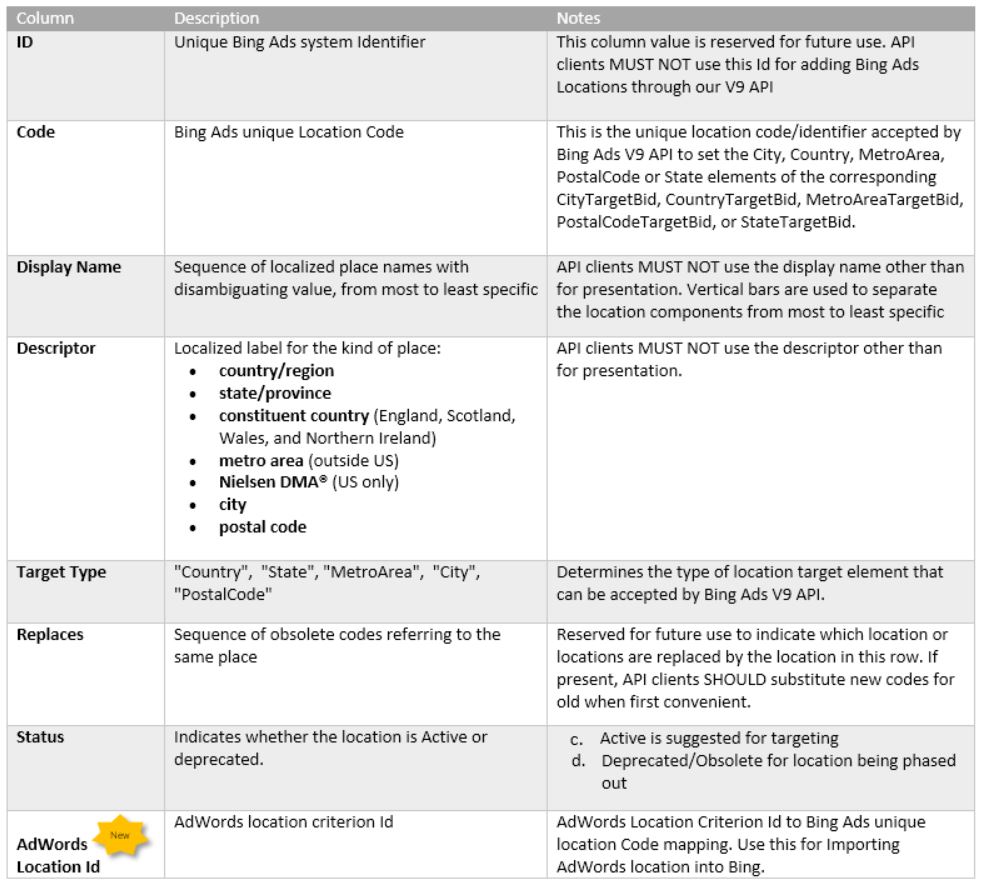Mapping AdWords locations to Bing Ads locations made easy
As a continuation of our location Targeting improvements in Bing Ads, we introduced a unified Geographical Locations csv file containing our Bing Ads Geo Location codes, last fall. This month, we added mapping AdWords Location criterion Ids to the same file for the corresponding Bing Location codes, based on the feedback from our developers and advertisers like you. This will simplify and improve the experience for importing AdWords Campaigns into Bing Ads.
Geographical Location file format
The new GeoLocations.csv file is available in English, French, German, Italian, Portuguese, Spanish and Chinese localized formats. The file contains the following columns.
Obtaining the Latest Geographical locations from API
This GeoLocation.csv file will be updated as and when we add/support a new location. When you download the geographical locations data, you should take note of the ETag response header value. For subsequent requests you can use the value of the ETag with the If-None-Matchrequest header to determine whether the locations file has changed since the last time you downloaded it. For a given language when a new version of the file is available, a new and unique ETag value will be returned in the response. As an alternative, you could keep track of the timestamp of your last download. Then use the If-Modified-Since request header to determine whether the file has been modified. If the geographical locations data file hasn’t changed since the last download, it is more efficient for you not to download it on each subsequent request.
Note that we will not be updating our old geo locations Xml file going forward. We will discontinue and remove the XML locations file on May 31st 2015. We recommend you to switch to the new csv file at the earliest possible time.
As always, we would love for developers to provide their feedback. If you have any questions or comments, feel free to post them in the comments below.
